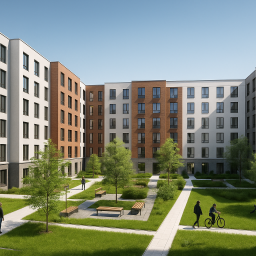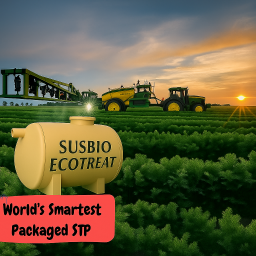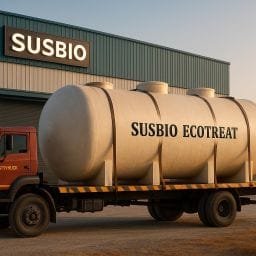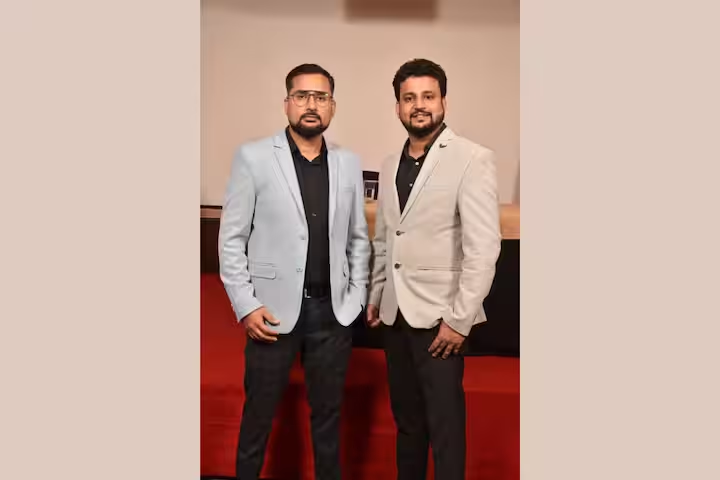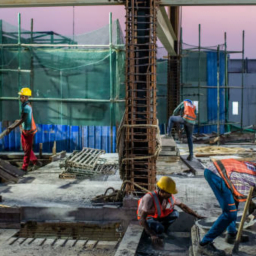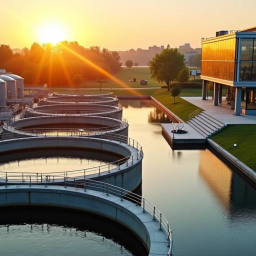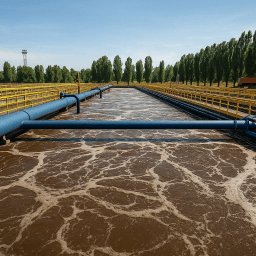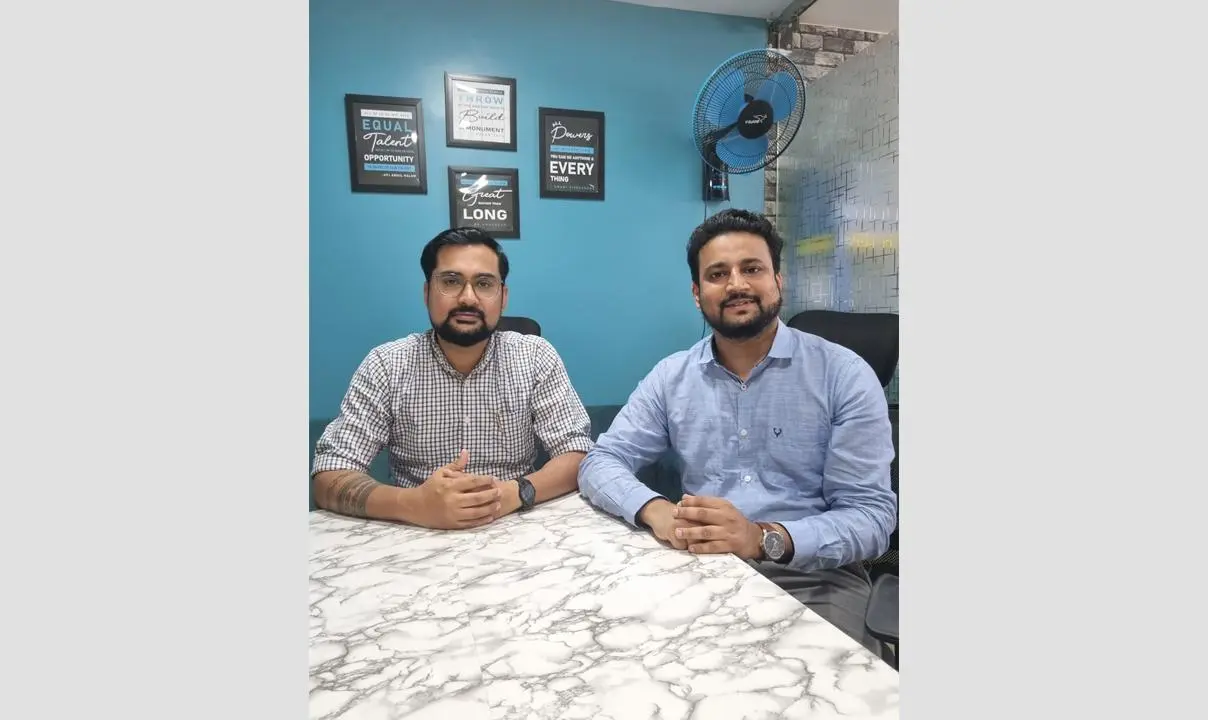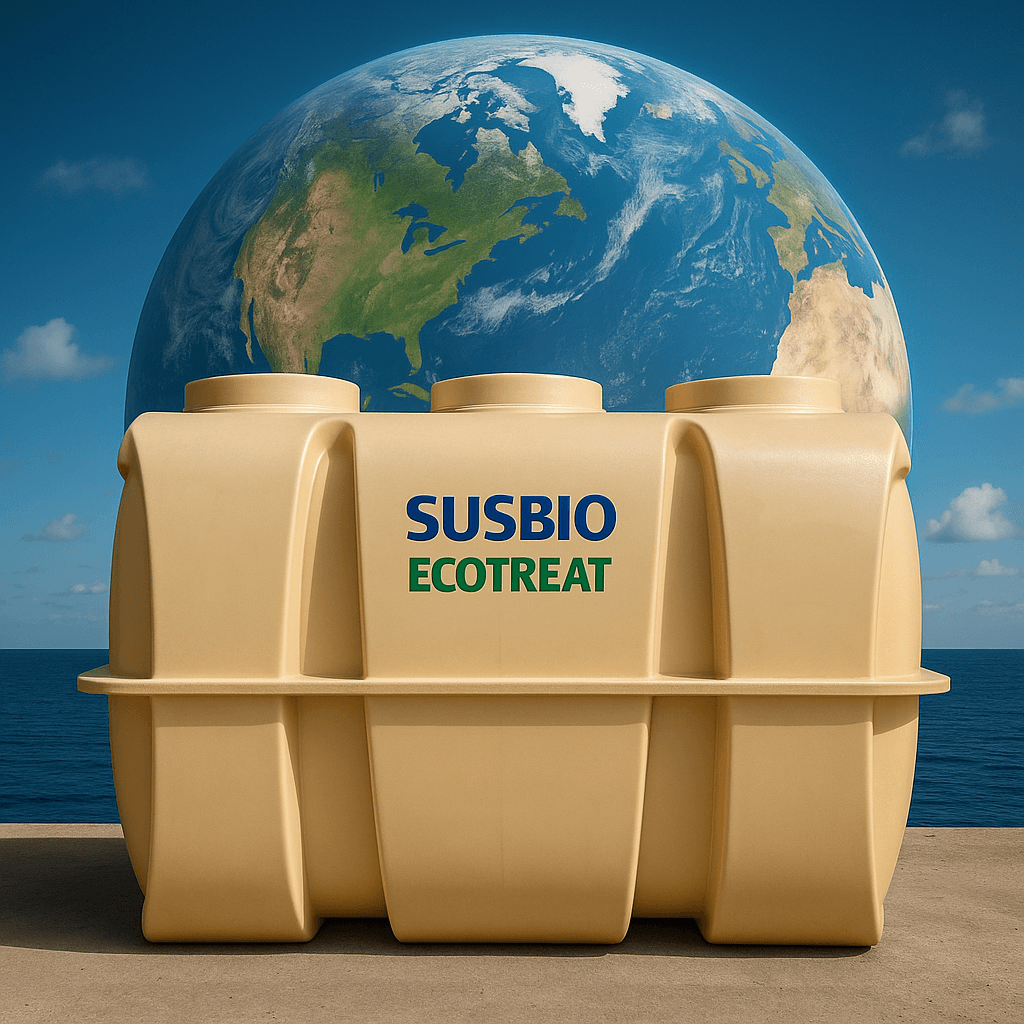
India stands at a crossroads in its water management journey. Urbanization, climate change, and increasing water demand are pushing cities to look beyond traditional freshwater sources. Sewage Treatment Plants (STPs) have emerged as a vital solution, with the potential to treat and recycle up to 80% of urban wastewater for non-potable purposes like irrigation, landscaping, and industrial use. Yet, despite this immense potential, public acceptance remains one of the most significant barriers to mainstreaming water reuse across the country.
This blog explores the promise of water reuse from STPs, the multifaceted barriers to public acceptance, and how advanced solutions like SUSBIO ECOTREAT can help bridge the gap between technology and trust.
The Promise of Water Reuse from STPs in India
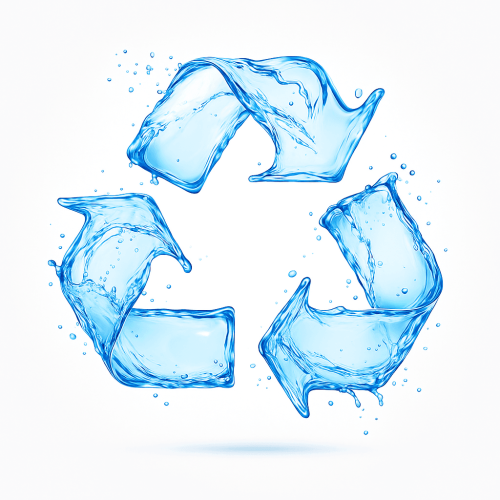
Untapped Potential
India generates over 72,000 million litres of urban wastewater daily, but only about 28% is effectively treated, and a mere 3% of this treated water is reused beneficially. According to the Council on Energy, Environment and Water (CEEW), 80% of wastewater generated in urban India could be treated and reused for non-potable applications, offering a significant opportunity to relieve pressure on freshwater sources, reduce pollution, and enhance water security.
Policy Momentum
Recognizing this opportunity, several states—including Punjab, Rajasthan, Karnataka, Maharashtra, and Gujarat—have introduced policies mandating or incentivizing the reuse of treated wastewater, especially for industries and agriculture near STPs. However, implementation remains inconsistent, and public buy-in is often lacking.
Barriers to Public Acceptance of Water Reuse
Despite the clear environmental and economic benefits of water reuse, projects often face resistance from end-users, especially in urban residential areas. The obstacles are multifaceted, spanning psychological, social, technical, and institutional dimensions.
1. The “Yuck Factor” and Psychological Barriers
- Visceral Discomfort:
One of the most persistent challenges is the “yuck factor”—a strong, instinctive reaction of discomfort or disgust at the idea of using water that was once sewage, even after it has been rigorously treated. This reaction is particularly strong when discussing potable reuse, but also affects non-potable uses such as toilet flushing, gardening, or cleaning.
- Perceived Health Risks:
Many people remain concerned about possible contamination, chemical residues, and pathogens, even when scientific evidence confirms the safety of treated water.
- Sensory Cues:
Residents often judge water quality by its appearance and smell. Any deviation from clear, odorless water can quickly erode trust, regardless of lab results.
- Fear of the Unknown:
A lack of familiarity with advanced water treatment processes can fuel apprehension and skepticism.
2. Lack of Trust in Treatment and Institutions
- Distrust in Operations:
There is widespread doubt about the reliability of sewage treatment plant (STP) operations. Many fear that lapses in maintenance or monitoring could compromise water quality.
- Transparency Deficit:
When water quality data is not shared openly or is difficult to understand, public suspicion and resistance tend to grow.
- Institutional Fragmentation:
Multiple agencies often oversee different aspects of wastewater management, leading to confusion, overlapping responsibilities, and weak enforcement.
3. Insufficient Public Awareness and Engagement
- Limited Knowledge:
Many residents are unaware of the environmental and economic benefits of water reuse, or the rigorous standards that govern treated water.
- Minimal Community Participation:
Without direct engagement and involvement, communities feel excluded from decision-making processes and are less likely to support reuse initiatives.
4. Policy and Governance Gaps
- Fragmented Regulations:
Only a minority of states have formal water reuse policies, and most lack structured roadmaps or compliance frameworks.
- Financial Constraints:
Smaller cities and urban local bodies (ULBs) often do not have the resources to invest in advanced STPs or to carry out effective public outreach.
- No Uniform Pricing:
The availability of free or subsidized freshwater reduces the economic incentive for consumers to switch to treated water.
5. Technical and Operational Challenges
- Inconsistent Water Quality:
Outdated processes, lack of skilled operators, and poor maintenance can result in subpar treated water, which reinforces negative perceptions.
- Odor and Aesthetic Issues:
Even minor lapses in STP operations can lead to water with unpleasant odor or color, deterring reuse.
- Limited Demonstration Projects:
Few communities have firsthand experience with successful water reuse projects, making it harder to build public confidence.
Overcoming Barriers: Strategies for Building Public Acceptance
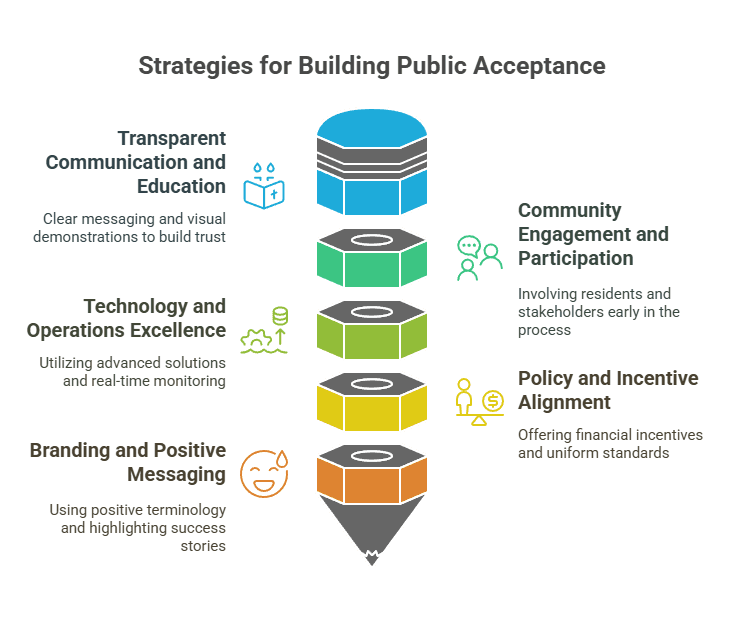
- Transparent Communication and Education
- Clear Messaging: Use simple, non-technical language to explain how STPs work and the safety of treated water.
- Visual Demonstrations: Facility tours, videos, and live demonstrations can show the transformation from sewage to safe, reusable water.
- Regular Reporting: Publishing water quality data and safety reports builds trust and accountability.
- Community Engagement and Participation
- Early Involvement: Engage residents and stakeholders from the planning stage, inviting feedback and addressing concerns proactively.
- Community Champions: Identify and train local advocates who can share positive experiences and build support within their networks.
- Technology and Operations Excellence
- Advanced Treatment Solutions: Use proven technologies like SUSBIO ECOTREAT that consistently deliver high-quality, odor-free treated water, meeting all CPCB norms.
- Real-Time Monitoring: Implement digital monitoring systems to ensure compliance and quickly address operational issues.
- Operator Training: Invest in skilled personnel to maintain and operate STPs efficiently, minimizing lapses that can erode public trust.
- Policy and Incentive Alignment
- Financial Incentives: Offer rebates, subsidies, or reduced tariffs for communities and industries adopting water reuse.
- Uniform Standards: Develop sector-specific, enforceable standards for treated water quality and reuse applications.
- Integrated Governance: Establish a central coordinating authority to streamline policy implementation and enforcement.
- Branding and Positive Messaging
- Avoid Negative Terminology: Use terms like “reclaimed water” or “recycled water” instead of “wastewater” to reduce stigma.
Highlight Success Stories: Showcase communities and industries that have benefited from water reuse, emphasizing environmental and economic gains.
SUSBIO ECOTREAT: Bridging the Gap Between Technology and Trust
SUSBIO ECOTREAT is at the forefront of addressing both technical and social barriers to water reuse in India. Here’s how it empowers communities and industries to embrace water reuse with confidence:
- Advanced Dual-Treatment Process: Ensures consistently high-quality, odor-free treated water that meets or exceeds CPCB standards, suitable for landscaping, flushing, and irrigation.
- Plug-and-Play Design: Prefabricated and modular, SUSBIO ECOTREAT is easy to install, operate, and maintain, making it ideal for residential complexes, commercial buildings, and industrial estates.
- Real-Time Monitoring: Digital dashboards and automated alerts ensure water quality is always maintained, with data easily accessible for transparency and reporting.
- Community Engagement Support: SUSBIO provides educational materials, facility tours, and engagement programs to help communities understand and trust the treatment process.
- Eco-Friendly and Cost-Effective: Energy-efficient operation and low maintenance costs make SUSBIO ECOTREAT a sustainable choice for long-term water security.
Case Study: Overcoming the “Yuck Factor” in Urban Apartments
In Bengaluru, where decentralized STPs are mandated for apartment complexes, many residents initially resisted reusing treated water due to concerns about color, odor, and safety. By upgrading to advanced systems like SUSBIO ECOTREAT, which deliver clear, odorless water and provide real-time quality data, several communities have successfully shifted perceptions. Regular facility tours, transparent reporting, and visible environmental benefits (like lush gardens irrigated with reclaimed water) have helped build trust and acceptance.
The Road Ahead: Unlocking India’s Water Reuse Potential
India’s journey toward mainstreaming water reuse from STPs is both a technological and social challenge. While the infrastructure and policies are evolving, the most critical factor remains public acceptance.
Key Takeaways
- Education and Transparency: Consistent, honest communication about the safety and benefits of water reuse is essential.
- Community Involvement: Engaging stakeholders early and often fosters ownership and trust.
- Technology Matters: Reliable, advanced treatment solutions like SUSBIO ECOTREAT are essential for delivering water that meets public expectations and regulatory standards.
- Policy Support: Financial incentives, uniform standards, and integrated governance can accelerate adoption.
By addressing the barriers to public acceptance, India can unlock the vast potential of water reuse from STPs—ensuring water security, reducing pollution, and building a more sustainable future.
Ready to build trust and sustainability in your community?
Contact SUSBIO to discover how ECOTREAT can help you achieve seamless, compliant, and publicly accepted wastewater reuse.


